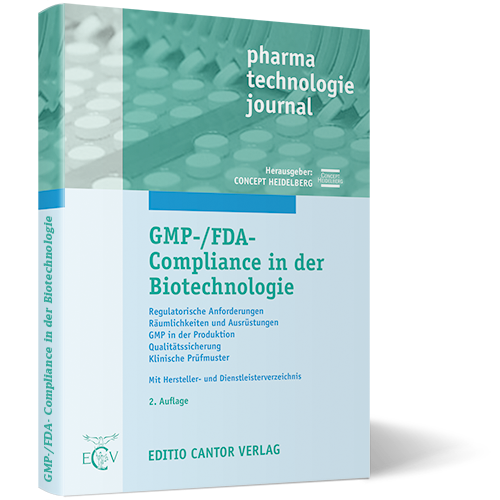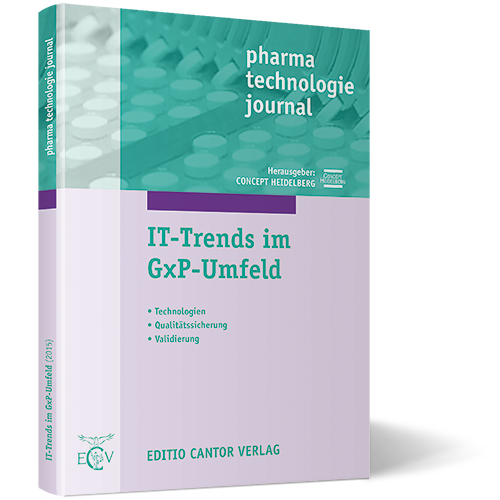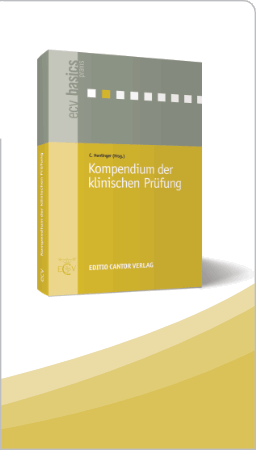Ihr Suchergebnis
Sie recherchieren derzeit unangemeldet.Melden Sie sich an (Login) um den vollen Funktionsumfang der Datenbank nutzen zu können.
Sie suchen in allen Bereichen nach dem Autor Berg G.
In der Rubrik Zeitschriften haben wir 12 Beiträge für Sie gefunden
-
Leak Test for Gas-Tightness of Filled Glass Ampoules Using the Indicator Method
Rubrik: Originale
(Treffer aus pharmind, Nr. 08, Seite 1013 (2022))
Leak Test for Gas-Tightness of Filled Glass Ampoules Using the Indicator Method / Test for Oxidation of the Content · Scheer R1, Hilgenberg I2 · 1Abnoba GmbH, Niefern-Öschelbronn und Hilgenberg GmbH, Malsfeld
Leak Test Ampoules Gas Leak Indicator Reaction Oxidation Determination of Defect Size The integrity of tightly closed, filled ampoules is a basic requirement for maintaining product quality. There are numerous causes of leaks. These include, for example, quality defects of the empty ampoules used, thermally induced cracking, e.g., when melting or melting the ampoule skewer after filling the ampoule, as well as transport-related damage. The latter can happen during the separation of the ampoules in filling, visual inspection, and labelling machines, due to dynamic pressure in buffer zones in these machines, in any transport of the ampoules, including the finished ...
-
Quality Assurance in Early Process Steps in the Production of Herbal Medicinal Products
Rubrik: GMP / GLP / GCP
(Treffer aus pharmind, Nr. 05, Seite 611 (2022))
Wolf I | Valder C | Waimer F | Wagner B | Dalichow K | Steinhoff B
Quality Assurance in Early Process Steps in the Production of Herbal Medicinal Products / Wolf et al. • Quality Assurance · Wolf I1, Valder C2, Waimer F3, Wagner B4, Dalichow K5, Steinhoff B6 · 1Bionorica SE, Neumarkt und Systema Natura GmbH, Flintbek und Dr. Willmar Schwabe GmbH & Co. KG, Karlsruhe und Finzelberg GmbH & Co. KG, Andernach und Dr. Loges + Co. GmbH, Winsen (Luhe) und Bundesverband der Arzneimittel-Hersteller e. V., Bonn
Herbal medicinal products contain active substances of plant origin such as comminuted (cut or powdered) or whole herbal drugs, dry, soft or liquid extracts, tinctures, expressed juices, oleoresins, gums, exudates or essential oils. Annex 7 of the EU GMP Guideline [ 1 ] sets an overall framework for the entire process chain, starting from Good Agricultural and Collection Practice (GACP) [ 2 ] with its requirements for the agricultural production steps such as cultivation, collection, cutting before drying, drying and primary processing and ending up with Part II and I of the EU GMP Guideline [ 3 , 4 ] for the ...
-
Verification of chromatographic pharmacopoeial procedures for herbal drugs and herbal drug preparations
Rubrik: Arzneimittelwesen
(Treffer aus pharmind, Nr. 09, Seite 1159 (2021))
Preisitsch M | Giera D | Flamm D | Franz-Oberdorf K | Gerke H | Steinhoff B
Verification of chromatographic pharmacopoeial procedures for herbal drugs and herbal drug preparations / Recommendations from industry · Preisitsch M1, Giera D2, Flamm D3, Franz-Oberdorf K4, Gerke H5, Steinhoff B6 · 1 PhytoLab GmbH & Co. KG, Vestenbergsgreuth und G. Pohl-Boskamp GmbH & Co. KG, Hohenlockstedt und Systema Natura GmbH, Flintbek und Finzelberg GmbH & Co. KG, Andernach und Schaper & Brümmer GmbH & Co. KG, Salzgitter und Bundesverband der Arzneimittel-Hersteller e. V., Bonn
The correctness of analytical results is an essential requirement for ensuring the quality, safety and efficacy of medicinal products. Analytical procedures described in the European Pharmacopoeia (Ph. Eur.) are regarded as validated, as validation is considered to be performed in the course of the development of the respective monograph . Basis for this validation is the Technical Guide for the Elaboration of Monographs [ 1 ] which comprises in its chapter 3 “Analytical Validation” the requirements of Guideline ICH Q2(R1) [ 2 ] and further guidance on specific application to methods used in the Ph. Eur. As indicated in General Notices of the Ph. Eur. [ 3 ] ...
-
Es gibt 9 weitere Treffer zu Ihrer Anfrage[ Alle Treffer dieser Rubrik anzeigen ]
In der Rubrik Bücher haben wir 2 Bücher für Sie gefunden
-
GMP-/FDA-Compliance in der Biotechnologie
Regulatorische Anforderungen · Räumlichkeiten und Ausrüstungen · GMP in der Produktion · Qualitätssicherung · Klinische Prüfmuster(Treffer aus Büchern)
Biopharmazeutika gewinnen trotz aller Rückschläge bei den Neuzulassungen zunehmend an Bedeutung. Im Jahr 2012 waren bereits 21% aller verkauften Medikamente Biopharmazeutika. Aber gerade bei diesen Produkten, die den Schwankungen ... -
IT-Trends im GxP-Umfeld
Technologien, Qualitätssicherung, Validierung(Treffer aus Büchern)
Der IT-Bereich unterliegt besonders stark Veränderungen und Innovationen. Die Komplexität der Systeme wird laufend größer, web-basierte Applikationen mit Single-Sign-On, vor denen man zu Anfangs im GxP-Bereich zurückschreckte, sind inzwischen ...









